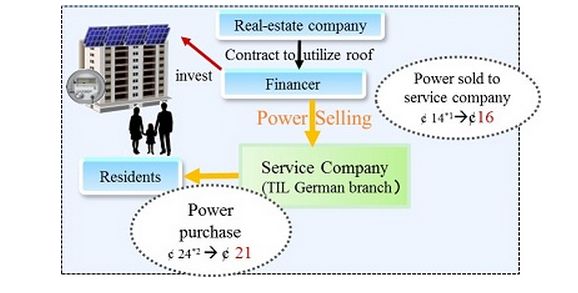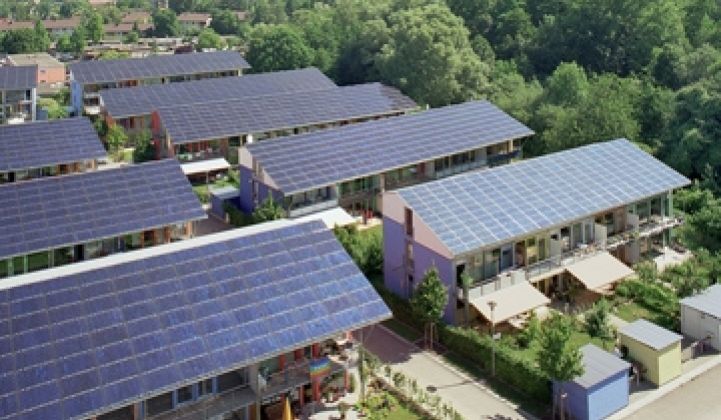In the first stages of change on the grid, utilities will start to face increasing threats to revenue and indirect competition from distributed energy service providers. That's where things stand in the U.S. today.
In the second stage, some utilities may finally feel battered enough to give in, do an about-face, and actually embrace a distributed energy world. That's what RWE, Germany's second-largest utility, is doing as it plans to become an "enabler" and "system integrator of renewables."
In the third stages of change, traditional utilities may simply become irrelevant. That's what may be happening in Germany this week.
Toshiba, the Japanese electronics and engineering firm, announced plans today to bypass utilities and offer solar electricity directly to German apartment dwellers.
The company calls it an "on-site consumption model" that will function outside Germany's feed-in tariff program.
Toshiba described its model in a press release earlier today. It's somewhat similar to a commercial power purchase agreement.
The company will initially finance 3 megawatts of systems through pension funds, and install them on apartments owned by the German real estate company GAGFAH. Toshiba's project development arm will own and operate the systems, purchase the solar electricity from the pension funds, and then sell it to consumers "at a lower rate than that charged by electric utilities."
Here's an illustration provided by Toshiba on the pricing and structure. Notice there's no utility:

Technically speaking, Toshiba isn't fully avoiding other utilities. It will need to purchase wholesale electricity when the solar installations aren't producing, and it will require interaction with the grid. But as the company scales the number of systems it installs (100 megawatts planned through 2016), it plans to integrate storage and manage the resources through its software platform, called the Micro Energy Management System (MicroEMS). That will continue to marginalize traditional electricity providers.
"Toshiba’s goal is to develop a self-sufficient model for on-site consumption that delivers solar-power electricity day and night, and apply it to a service business that supports energy management on a real-time basis" reported the company in its press release.
In 2011, Toshiba bought the smart metering company Landis+Gyr. This summer, its started testing the MicroEMS platform with Landis+Gyr by connecting a 1-megawatt solar project with sodium-sulfur and lead-acid batteries and using them to match changing residential loads under demand response programs. Toshiba has also been testing MicroEMS in Japan.
This German project will enable Toshiba to match up its MicroEMS platform with its growing pipeline of solar projects -- becoming, in effect, a utility.
The announcement probably won't make European utilities facing steep declines in revenue happy. But as Germany looks to a future without a feed-in tariff, Toshiba's consumption model could eventually provide a solution to keep the solar market moving.



